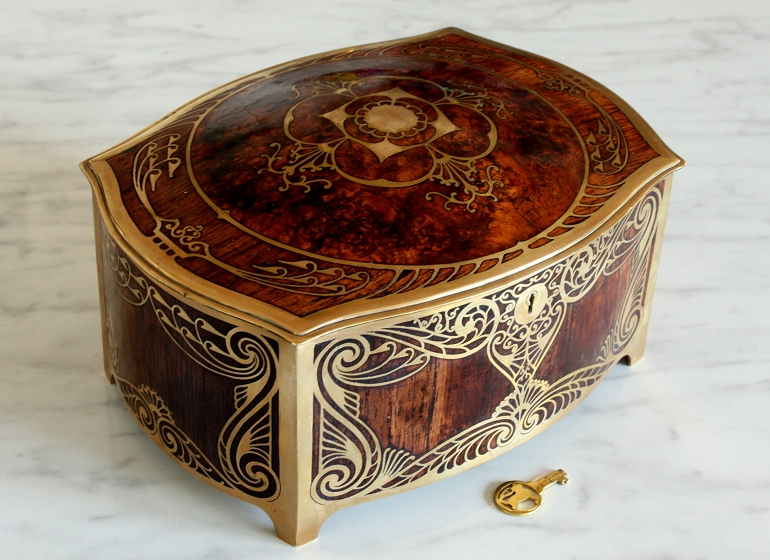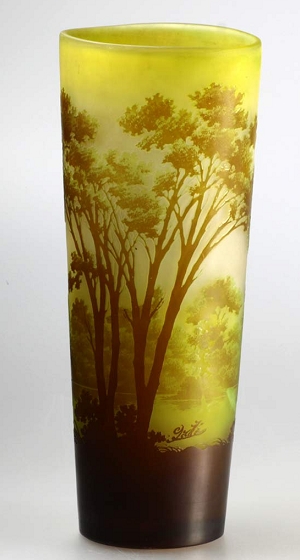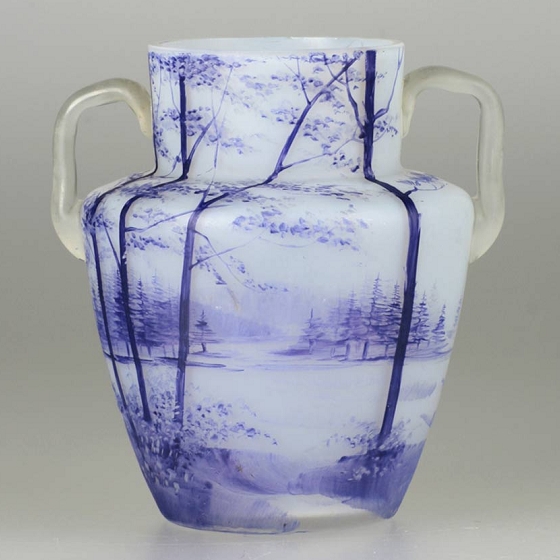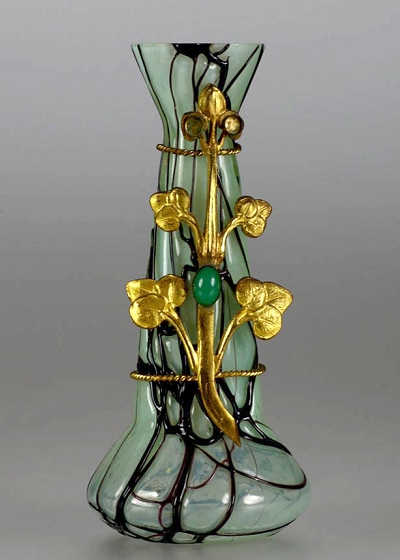My Gallery - Art Nouevou Style Naturalistic Silverware
A set of 6 French silver-gilt pierced Convolvulus pattern teaspoons
These 6 teaspoons are originally components of a large set with triangle shaped naturalistic icecream spoons made in France, circa 1900. The bowl is delicately designed as a petal and the stem as a convolvulus flower and tendrils. The joint part of the bowl has a pair of rolls which is similar to Rococo Grand pattern.
Silver Bon-bon dish by Alvin
Beautifully eraboraeted silver bon-bon dish, Forget-me-not flower design, made by Alvin around 1900.
Pweter Dish by W.M.F. circa.1900
W.M.F. was the most successful German art pewterer of the Art Nouveau period. Designers shch Wilhelm Wagenfeld adapted classic Art Nouveau elements to commercial forms which were mass-produced in Continental pewter, an electroplated metal alloy more similar to Brinannia metal than British pewter.
Daisy pattern Bon-bon Spoon by Paye and Baker, circa 1910
The Daisy pattern dates back to 1900, of which the bowl is a figural flower with more flowers going up the stem. It is hallmarked with Sterling and the 3 heart P & B hallmark. P & B are the initials of Paye & Baker of North Attleboro, Massachusetts, which operated there c. 1891 until the 1930s.
Long: 5 inches, Weighs: 15.8 grams
Jewellery Box by Erhard & Söhne of Schwäbisch Gmünd, circa 1900
This jewelley box is made using their trademark Intarsia technique of Brass, inlaid with both Burr Walnut and Palisander. Curved, bulbous form on the 4 sides and the top. Interior is lined with Burgundy Velvet.
Unsigned, but most of Erhard & Söhne's pieces were not signed. A Jewellery Dressing Box with the same design and Erhard mark exists, which contains tools by Henckels, Solingen. The design, quality and manufacture are unmistakable as is the fact that it comes with a signed key for the Lock - key depicts the Erhard Lion.
Measures 23 by 18 by 11 cm

Paysage de Verre by Emile Gallé workshop in 1905
The very best quality Paysages de Verre vase made by Emile Gallé workshop in Nancy, France from around 1905-1910. Round shaped bode with a conical body with oval opening. Clear glass with amber, green and yellow overlay. In several steps etched. Circulating motif of a wetland landscape. Signed with etched "Gallé".
It was at this 1889 Paris exposition that he introduced his multilayered glass with surface cutting. His cameo glass was widely acclaimed, and this technique was soon thereafter to be used by other glass manufacturers. Glass inspired by and having quotations from poetry were named "verriere paralante". Scenic pieces, which were first made in the 1890's, he referred to as "paysages de Verre".
A similar vase in a similar color and design variation is displayed at: Auction catalog “Quittenbaum 92, 26 October 2010, page 46 Object number 86”. Height of this object 30cm.
 Emile Gallé Nancy 1905 Paysage de Verre Jugendstil
Emile Gallé Nancy 1905 Paysage de Verre Jugendstil Emile Gallé Nancy 1905 Paysage de Verre Jugendstil
Emile Gallé Nancy 1905 Paysage de Verre Jugendstil
Paysage de Verre Vase by Daum Freres, circa 1910
Art Nouveau `Paysage de Verre` vase with two handles from the period around 1910. The vase is a product of the French manufacture Daum Freres. Unmarked. Painted in enamel. The vase is painted with a winter landscape. Height of the vase 12cm.
Reference of similar vases: Judith Miller "Glass of the 20th century" New York 2004, page 141. The vase has small chip on the top edge.
 Paysage de Verre Vase by Daum Freres, 1910.
Paysage de Verre Vase by Daum Freres, 1910.
Pallme König & Habel Bohemian Art Nouveau Bronze Mount Art Glass Vase, circa 1900
Gorgeous Bohemian Art Nouveau - Jugendstil glass vase mounted in gilt Bronze. The unsigned vase stands just short of 5 inches tall. The base of the vase measures approx. 3 inches and has a beautiful jade green color. The piece is in excellent original condition with no damage or repairs. A truly collectible piece of Palme Koenig & Habel art glass, from the period around 1900. Reference: Wolfgang Venzmer "Jugendstil im Landesmuseum Mainz” Mainz 1990, page 227. Don't miss out on this great piece!!
The Manufacture Pallme King & Habel was founded in 1786 in Steinschönau. They merged in 1889 with the glass factory, Elizabeth. Vases from the Company Elizabeth, Pallme Koenig & Habel characterized by a strong iridescence and the irregular threads applied over the glass.
 Pallme König & Habel Bohemian Art Nouveau Bronze Mount Art Glass Vase, circa 1900
Pallme König & Habel Bohemian Art Nouveau Bronze Mount Art Glass Vase, circa 1900
 Top
Top Site Map
Site Map References
References About Me
About Me